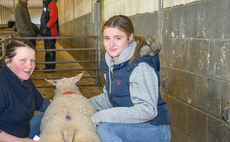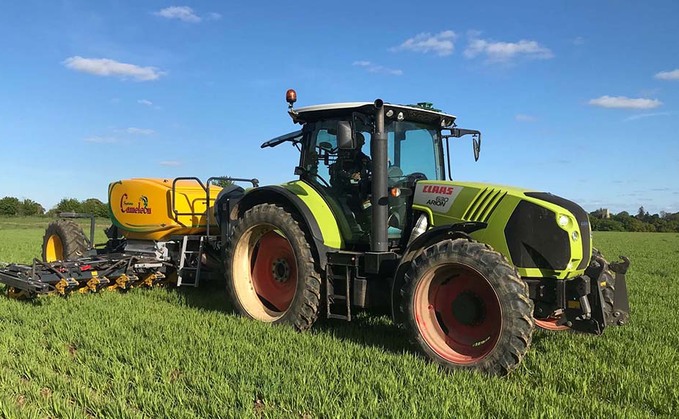
Mechanical weeding can be a highly effective technique but accuracy is key, so matching the working width of the hoe and drill by combining the two could be the way forward. Jane Carley finds out more.
Without chemical weed controls at hand, organic cereal growers must look to mechanical weeding to protect crops from competition for light and nutrients. And it is this challenge that faced Leigh Nobes, farm manager at MacGregor Farming Partnership in Great Witchingham, Norfolk.
The business has a 400ha mixed enterprise comprising cereals, Poll Dorset sheep, commercial sucklers and pedigree Beef Shorthorns. Soils vary across the farm and cropping includes wheat, barley, oats and cover crops. Clover leys for fertility building are also grown in rotation on a third of the acreage.
"We previously used a contractor to establish crops with a Vaderstad drill, but the spacing meant that we could not use an inter-row hoe. With soils that cap over winter, a tine harrow was not enough to break through that cap and take out weeds effectively," says Mr Nobes.
A Twitter follower of fellow organic farmer John Pawsey, he began to investigate the Swedish-made System Cameleon, a combined drill and hoe for which Mr Pawsey is the UK importer, as well as using it on his own Suffolk farm.
"Choosing a drill that could work at wider spacings and a separate hoe was discounted as the two implements cannot ever work together with 100% accuracy," says Mr Nobes. "The System Cameleon uses the same spacing and the same coulter, so can be more precise."
Designed as a straight tine coulter drill which can place seed either in a single line or a band, swapping to the System Cameleon to hoeing sees quick-change A-hoe blades attached to the coulters using a roll pin.
The blades are then side shifted hydraulically to work in the centre between the rows, with camera guidance to help row following. The drill coulter's press wheel remains in place to offer depth control, which is adjusted centrally.
Delivery of the System Cameleon to MacGregor Farming Partnership was on a low loader in five pallet boxes. This included the coulter/depth control units which were to be bolted onto the main frame before connection to the seed hoses and other final assembly to be completed, allowing Mr Nobes to set it at his preferred row spacing of 250mm.
"John Pawsey helped us to set it up, and we also have a users' WhatsApp group to ask questions and discuss techniques," he explains.
The drill/harrow has been used to direct drill oilseed rape with good results, as well as winter and spring barley on some neighbouring conventional land. It can also work on plough, min-till or prepared seedbeds, says Mr Nobes.
"It is not strictly a direct drill and trash can be an issue. However, we find that it works well between the rows; we established our cover crops this year after harvest by using the Cameleon to direct drill the fodder rape directly into the stubble."
The wide spacing and ability to multi-task on sowing and hoeing has expanded the range of opportunities, he explains: "We have used it to undersow our clover leys while we are doing our last pass with the hoe. I am also planning to establish a fodder rape cover crop that way this year, as I think the cereal crop will protect the fodder rape from flea beetle."
Tine coulters mean easier pulling than disc drills, with a 160hp Claas Arion 630 offering ample power for the 6m version; working at 10-12kph 40ha/day is achievable when drilling, although hoeing is a slower.
It is quite a heavy outfit at 5.5 tonnes, Mr Nobes comments, so he tends not to completely fill its two tonne capacity hopper in wet conditions, while dual wheels are fitted to the tractor to help spread the weight.
"We managed without GPS for hoeing while we were getting used to the outfit in the first season as the camera keeps the shares in the row, but it is certainly easier with it," he says.
The accuracy of the operation means that there is a wide operational window for hoeing, starting as soon as the crop is visible to enable the camera to follow the row, until it is in ear.
"It is important not to go too early with a pass that also undersows following seeds into the crop, as those seeds can grow into the canopy, making harvest more difficult," he adds.
Using a range of metering rollers for large and small seeds, Mr Nobes says that calibration is very accurate and seeds are placed evenly in the soil. Control is via a dedicated electro-hydraulic box, but it can work with the Greenstar RTK signal used elsewhere on the farm.
A stock of parts is held by John Pawsey, while major items need to come from manufacturer Gothia Redskap.
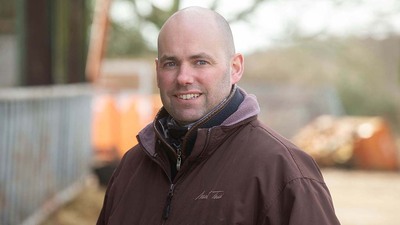
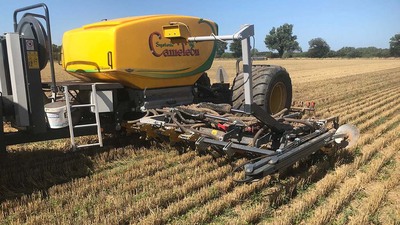

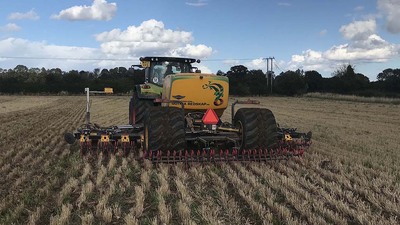
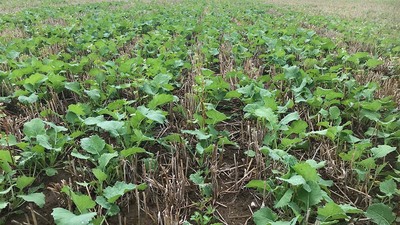
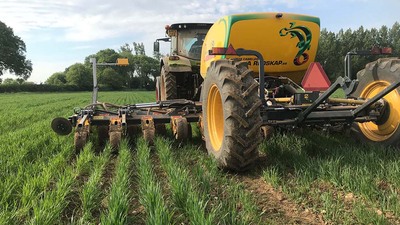
Verdict
Since the drill arrived on farm in 2019, its unusual appearance has attracted plenty of attention and interest, and Mr Nobes is keen to share its benefits with other farmers.
"Mechanical weed control is certainly gaining traction, even for conventional systems where spraying is not always practical or effective, so its attraction may not be restricted to organic farms in the future.
"It was quite an investment to purchase our own drill, but it is two implements in one and with the wide range of crops from cereals to grass and clover leys that we can use it for, the System Cameleon is kept busy throughout the year," he concludes.
























